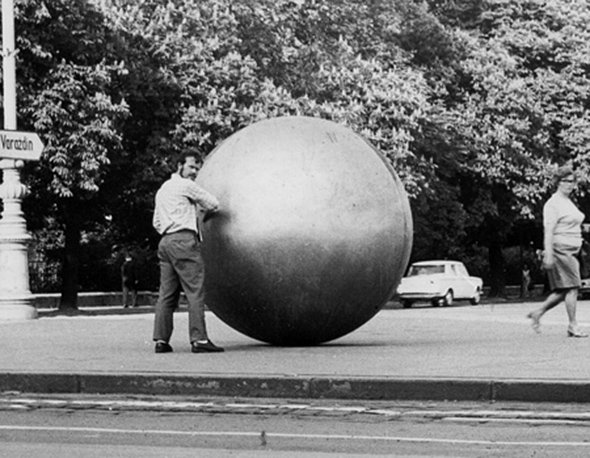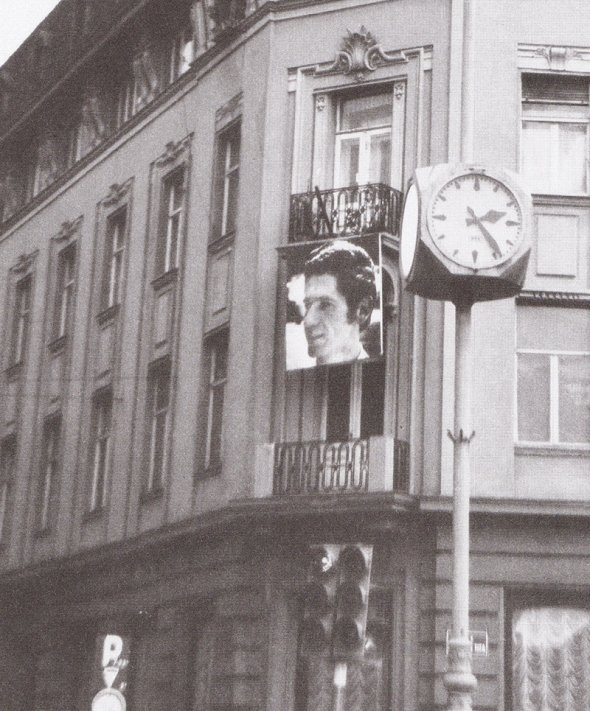The City as a Site of Plastic Happening – The Proposal Section of the 6th Zagreb Salon
The beginning of the 1970s in Zagreb saw a number of curated projects that commissioned new artistic productions to be realized in public space. At the time, texts written by art critics expressed strong enthusiasm and belief that such artistic practices were able to “democratize” art and reshape the social environment, by developing communication between the urban space and its inhabitants.
The City as a Site of Plastic Happening, conceived by art historian Željka Čorak, was the first invitation for artists to use the city as material for their art. The event was the first iteration of Proposal, the newly established section of the Zagreb Salon, whose very title pointed to the primacy of idea over realization: artists were commissioned to submit proposals, only some of which could be realized. Seventeen authors/groups submitted twenty-four proposals, which were all exhibited at the Student Center Gallery. [1] The idea of a socially-engaged art that uses the city and the public space as a site of confrontation with the audience itself constituted a radical proposal—a desired ideal of social and aesthetic transformation. Some of the works that became widely known were first produced for this event, such as the Grounded Sun by Ivan Kožarić, a large abstract golden sphere placed on one of the neighboring squares in the city. The work’s elusive, abstract shape and its bold placement in one of the busiest areas in the city spurred controversy and even incited aggressive reactions. Another provocative work was Braco Dimitrijević’s series of large-scale photo-portraits of “casual passers-by,” which hung at the representative site of the city’s main square facade. Monumental portraits of anonymous citizens mimicked similar representations of political leaders and occupied the square on which official political gatherings were held.
Taking place three years after the neo-leftist 1968 student revolts in Yugoslavia and immediately after the nationalist Croatian Spring revolts in 1971, Proposal marks the era when the urban space was developing into a site of articulation and visualization of political and aesthetic contestation. By the end of the 1970s when the New Art Practice was already being historicized[1], many of the critics initially enthusiastic about art’s interaction with the urban space now expressed disillusionment, identifying the failure of art in public space to truly succeed in its effort to reach the people. They also noted the indifference of the public and the failure of social institutions to take advantage of the artists’ “offer” to act in the name of the public good.
Guide for the chronology (Ivana Bago: Something to think about: values and valeurs of visibility in Zagreb from 1961 to 1986)
Through exhibition projects such as New Art Practice in Yugoslavia 1968-1978, Gallery of Contemporary Art, Zagreb (1978), Innovations in Croatian Art of the Seventies, Gallery of Contemporary Art, Zagreb (1982), New Art in Serbia 1970-1980. Individuals, groups, phenomena, Museum of Contemporary Art, Belgrade (1983).
Date: May, 1971
Organized by: 6th Zagreb Salon
Concept by: Željka Čorak
Participants: Boris Bućan, Braco Dimitrijević, Sanja Iveković, Jagoda Kaloper, Ivan Kožarić, Boris Ljubičić, Nada Orel, Goran Trbuljak, Marija Ujević, Gorki Žuvela, et al.

